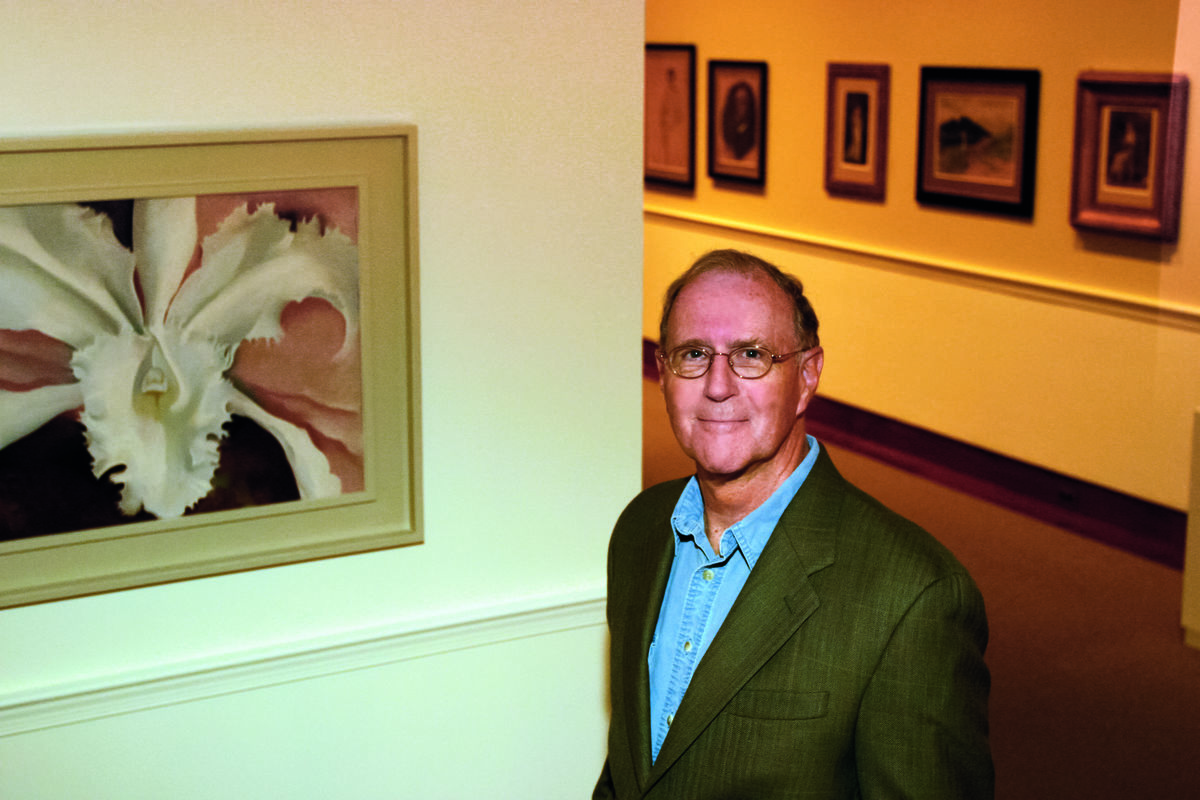John Wilmerding, Eminent Historian and Collector of American Art
When John Wilmerding came to Princeton in the fall of 1988 as the inaugural Christopher Binyon Sarofim ’86 Professor in American Art, he broke new ground. Although American art was by then taught at a number of universities, he was the first to occupy a position devoted exclusively to it. There was a certain logic in this, since Wilmerding arrived from Washington’s National Gallery of Art, where he had been responsible for establishing the institution’s first department of American art. As these related milestones suggest, acceptance of historical American art as a field worthy of collecting and study is a relatively recent development. John stood at the forefront of a small group of art historians, most of them trained at Harvard during the 1960s, who brought legitimacy and rigor to scholarship on the visual culture of the American past.
 As Wilmerding’s prodigious publications and enormous circle of friends and admirers attest, he did so with extraordinary dedication, breadth, and flair. By the time he transitioned to emeritus status in 2007, Wilmerding had more than twenty books and catalogues to his credit, ranging from insightful studies of major nineteenth-century artists—Fitz Henry Lane, Winslow Homer, Thomas Eakins—to incisive synthetic analyses of cultural moments and intellectual history: American Light: The Luminist Movement, 1850–1875; Compass and Clock: Defining Moments in American Culture—1800, 1850, 1900. For the prestigious Pelican History of Art series, Wilmerding literally wrote the book on American art. In all he studied, he excelled at discerning what was both individually distinctive and broadly meaningful.
As Wilmerding’s prodigious publications and enormous circle of friends and admirers attest, he did so with extraordinary dedication, breadth, and flair. By the time he transitioned to emeritus status in 2007, Wilmerding had more than twenty books and catalogues to his credit, ranging from insightful studies of major nineteenth-century artists—Fitz Henry Lane, Winslow Homer, Thomas Eakins—to incisive synthetic analyses of cultural moments and intellectual history: American Light: The Luminist Movement, 1850–1875; Compass and Clock: Defining Moments in American Culture—1800, 1850, 1900. For the prestigious Pelican History of Art series, Wilmerding literally wrote the book on American art. In all he studied, he excelled at discerning what was both individually distinctive and broadly meaningful.
As time passed and Pop art—whose efflorescence Wilmerding experienced in the 1960s—entered into history, John’s scholarly interests gravitated to the movement’s cultural and historical contextualization. He produced monographic studies on its major artists and themes and, in parallel with this shift, began collecting the art of the period. Wilmerding came from a distinguished family of collectors, and he amassed two distinctive and considerable collections of his own across seven decades. In keeping with his generous nature, he gave away both, an initial group of nineteenth-century paintings to the National Gallery in 2004, and the collection of Pop art to Princeton three years later. His identity as donor of the latter was announced, with characteristic modesty, only after an exhibition of the collection had closed at the Museum. “I thought it would be a perfect retirement gesture,” Wilmerding noted then, intended both to signify his gratitude to the University and as a vote of confidence in the Museum’s emerging plans for expansion, now coming to fruition.
In his two decades at Princeton, John taught perennially popular courses in American art and culture, and from 1992 to 1999 chaired the Department of Art & Archaeology. His successor in each of these activities, Rachael DeLue, recalled, “John’s groundbreaking scholarship made my own work possible, and he was beyond gracious when it came to letting the ‘next generation’ take the reins of American art at Princeton.” Wilmerding readily involved himself in the work of the Museum, acting as de facto curator of American art before the establishment of an endowed curatorship in the field that appropriately bears his name.
Assessing the scope and impact of Wilmerding’s career at Princeton and beyond, and the quality and strength of character that underlay it, Museum director James Steward observed, “It is easy enough to claim that someone’s contributions are incomparable, but in John’s case it is true. I can think of no one who has done so much for American art both historical and modern, and for American museums, with as much wit, wisdom, and quiet good grace.”
John’s final project was a study of the portrayal of hands in American painting—a fitting last topic for the person who lent such an outsize hand to the growth of the field he helped create and define.
Karl Kusserow
John Wilmerding Curator of American Art